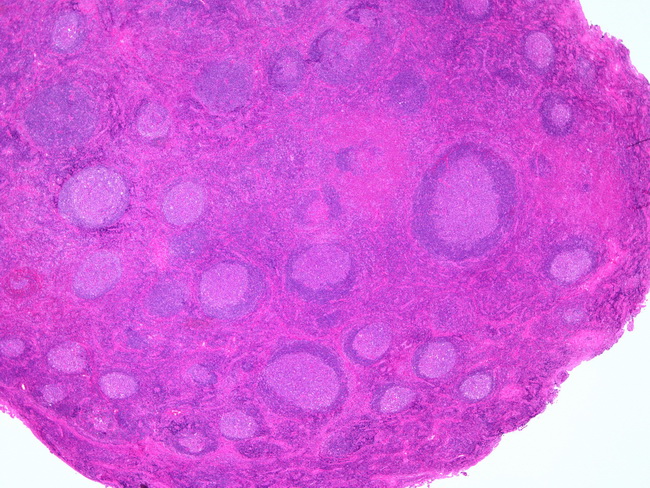Kimura Disease : Introduction


Comments:
Introduction: Kimura disease is a rare benign chronic inflammatory disorder of unknown etiology. It is endemic in Asia (mainly China, Japan, and Indonesia) but is also seen sporadically in the US, Europe, and other countries. It most commonly affects males in their 3rd or 4th decade of life (M:F = 6:1). The disease onset is insidious. The patients usually present with well-circumscribed subcutaneous nodules in the head and neck region (most commonly infra- or retroauricular mimicking a neoplasm) or major salivary glands, frequently associated with regional lymphadenopathy. The skin lesions and lymph nodes do not ulcerate. The patients have peripheral blood eosinophilia and elevated serum levels of IgE. Kimura disease may cause proteinuria and nephrotic syndrome in some patients. The image shows Kimura disease involving a cervical lymph node. The nodal architecture is preserved and there is follicular hyperplasia and intense eosinophilia surrounding the reactive follicles. Image courtesy of: @PatholWalker



